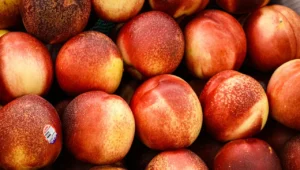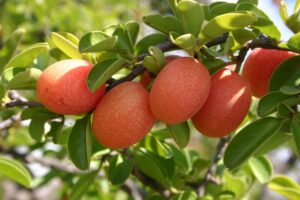How to Grow and Care for Tangelo: A Complete Guide
Are you looking to add a unique citrus variety to your garden? Tangelos might be the perfect choice for you! These delicious hybrid fruits—a cross between tangerines and pomelos or grapefruits—offer a sweet-tart flavor that’s hard to resist. With their distinctive “nipple” at the stem end and loose, easy-to-peel skin, tangelos have become increasingly popular among home gardeners across the US.
This comprehensive guide will walk you through everything you need to know about growing and caring for tangelo trees, whether you’re planting them in your garden, in pots on your patio, or starting from seed. Let’s dive into the world of tangelos and discover how you can enjoy these juicy fruits right from your own backyard!
What Is a Tangelo?
Before we get into growing techniques, let’s understand what exactly a tangelo is. Tangelos are hybrid citrus fruits resulting from crossing a tangerine with either a pomelo or grapefruit. The most common varieties in the US market include Minneola, Orlando, and Seminole.
According to the USDA Agricultural Research Service, tangelos combine the best qualities of their parent fruits—the easy-peeling nature of tangerines with the juiciness and size of pomelos or grapefruits. They typically have:
- A bright orange to reddish-orange color
- A characteristic protruding neck or “nipple” at the stem end
- Loose, easy-to-peel skin
- Juicy, tangy-sweet flesh with few to no seeds
- A distinctive flavor that’s sweeter than grapefruit but more complex than tangerines
Climate and Growing Zones for Tangelos
Tangelos thrive in warm climates similar to other citrus fruits. In the United States, they grow best in USDA Hardiness Zones 9-11, making them ideal for:
- California (particularly Southern California)
- Florida
- Arizona
- Texas (southern regions)
- Parts of Louisiana and other Gulf Coast states
If you live outside these zones, don’t worry! You can still grow tangelos in containers that can be moved indoors during colder months.
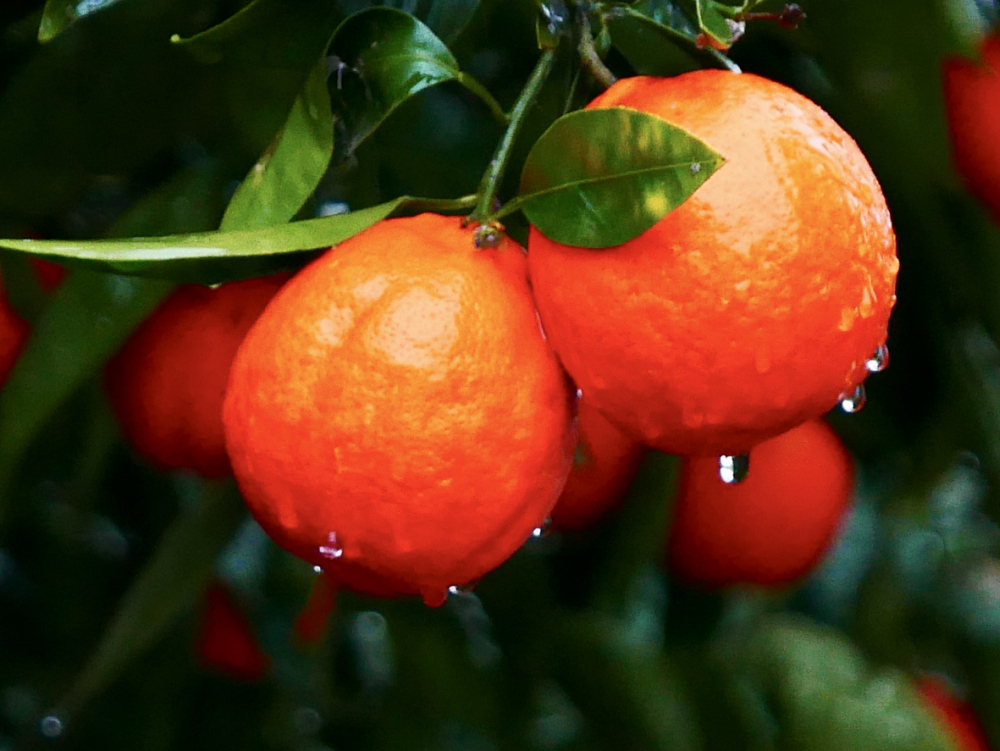
Tangelo Growing Conditions by USDA Zone
| USDA Zone | Growing Method | Winter Protection Needed | Expected Yield | Special Considerations |
|---|---|---|---|---|
| 9 | In-ground or pot | Light protection during frost | Good | Plant on south-facing area for added warmth |
| 10 | In-ground or pot | Minimal protection | Excellent | Ideal growing zone |
| 11 | In-ground or pot | None needed | Excellent | May need extra water in extremely hot areas |
| 8 | Container only | Must move indoors/greenhouse in winter | Moderate | Choose cold-hardy varieties like ‘Orlando’ |
| 7 or below | Container only | Indoor growing with grow lights during winter | Low to moderate | Consider dwarf varieties for easier indoor management |
How to Plant Tangelo Trees
Planting Tangelo Trees in Your Garden
Growing tangelos in your garden provides them with ample space to reach their full potential. Here’s how to plant them successfully outdoors:
- Choose the right location: Select a spot that receives 6-8 hours of full sun daily. Tangelos need plenty of sunlight to produce sweet fruit.
- Prepare the soil: Tangelos prefer well-draining soil with a pH between 6.0 and 7.0. If your soil is heavy clay, amend it with organic matter like compost to improve drainage.
- Spacing: Plant tangelo trees 12-15 feet apart to allow for proper air circulation and growth.
- Dig a proper hole: The hole should be twice as wide as the root ball but no deeper than the current root depth.
- Planting depth: Position the tree so the top of the root ball is slightly above ground level. This prevents water from collecting around the trunk and causing rot.
- Watering after planting: Create a watering basin around the tree and thoroughly water it after planting.
- Mulching: Apply a 2-3 inch layer of organic mulch around the base of the tree, keeping it a few inches away from the trunk to prevent moisture-related diseases.
Growing Tangelos in Pots
Container growing is an excellent option if you have limited space or live in a colder climate. Here’s how to grow tangelos in pots:
- Select the right container: Choose a large pot (at least 20 inches in diameter) with good drainage holes. Terra cotta, ceramic, or plastic pots all work well.
- Use quality potting mix: Use a citrus-specific potting mix or create your own by mixing regular potting soil with perlite and compost for improved drainage.
- Choose a suitable variety: Dwarf varieties like ‘Minneola’ are better suited for container growing.
- Planting process:
- Place a layer of gravel at the bottom of the pot for drainage
- Add your potting mix
- Position the tree so the root crown is slightly above the soil line
- Fill in with more potting mix and water thoroughly
- Positioning: Place your potted tangelo in a location that receives at least 6-8 hours of sunlight daily.
- Mobility advantage: The benefit of container growing is that you can move your tangelo tree indoors when temperatures drop below 32°F (0°C).
Growing Tangelos from Seed
While most commercial tangelo trees are propagated through grafting to ensure consistent fruit quality, growing from seed can be a rewarding project for patient gardeners. Keep in mind that seed-grown trees:
- Take 3-6 years to bear fruit
- May not produce fruit identical to the parent tree
- Often grow larger than grafted varieties
If you’d like to try growing a tangelo from seed:
- Extract seeds: Remove seeds from a fresh, ripe tangelo and rinse them thoroughly.
- Prepare for germination: Soak the seeds in water for 24 hours to soften the seed coat.
- Planting method:
- Fill small pots with seed-starting mix
- Plant seeds about ½ inch deep
- Keep the soil consistently moist but not waterlogged
- Place in a warm location (70-80°F or 21-27°C)
- Germination time: Expect germination within 2-6 weeks.
- Transplanting: Once seedlings have several sets of true leaves and are about 6 inches tall, transplant them to larger pots with citrus potting mix.
- Patience required: Remember that seed-grown trees require years of care before fruiting.
Caring for Your Tangelo Tree
Watering Requirements
Proper watering is crucial for tangelo tree health and fruit production:
- New trees: Water 2-3 times per week during the first year.
- Established trees: Water deeply but less frequently—usually once every 7-10 days, adjusting for rainfall.
- Container trees: Check moisture levels daily, especially during hot weather. Water when the top inch of soil feels dry.
- Seasonal adjustments: Reduce watering during winter months when growth slows.
- Warning signs: Yellowing leaves may indicate overwatering, while curling leaves often suggest underwatering.
Fertilizing Tangelo Trees
Tangelos, like all citrus, are heavy feeders and benefit from regular fertilization:
- Fertilizer type: Use a balanced citrus-specific fertilizer (such as 8-8-8 NPK).
- Application schedule:
- Young trees: Apply light fertilizer every 6-8 weeks during the growing season
- Mature trees: Fertilize three times yearly—early spring, early summer, and fall
- Container trees: Use a water-soluble fertilizer at half strength every 4-6 weeks during the growing season.
- Micronutrients: Watch for signs of deficiencies, particularly zinc and iron, which are common in citrus. Yellowing leaves with green veins often indicate a need for micronutrients.
- Organic options: Fish emulsion, composted manure, and citrus-specific organic blends work well for organic gardeners.
According to the University of Florida Extension Service, proper fertilization dramatically improves fruit quality and yield in tangelos.
Pruning and Training
Tangelo trees benefit from strategic pruning to maintain shape, improve air circulation, and boost fruit production:
- When to prune: The best time is late winter after danger of frost has passed but before spring growth begins.
- What to remove:
- Dead or diseased branches
- Crossing or rubbing branches
- Water sprouts (vigorous vertical shoots)
- Suckers from below the graft line
- Height management: For easier harvesting, you can prune to maintain a height of 8-12 feet.
- Container pruning: Potted tangelos require more frequent pruning to maintain a manageable size.
- Tools: Always use clean, sharp pruning tools and disinfect between cuts if dealing with diseased branches.
Pest and Disease Management
Tangelos can face several challenges from pests and diseases. Here’s how to manage the most common issues:
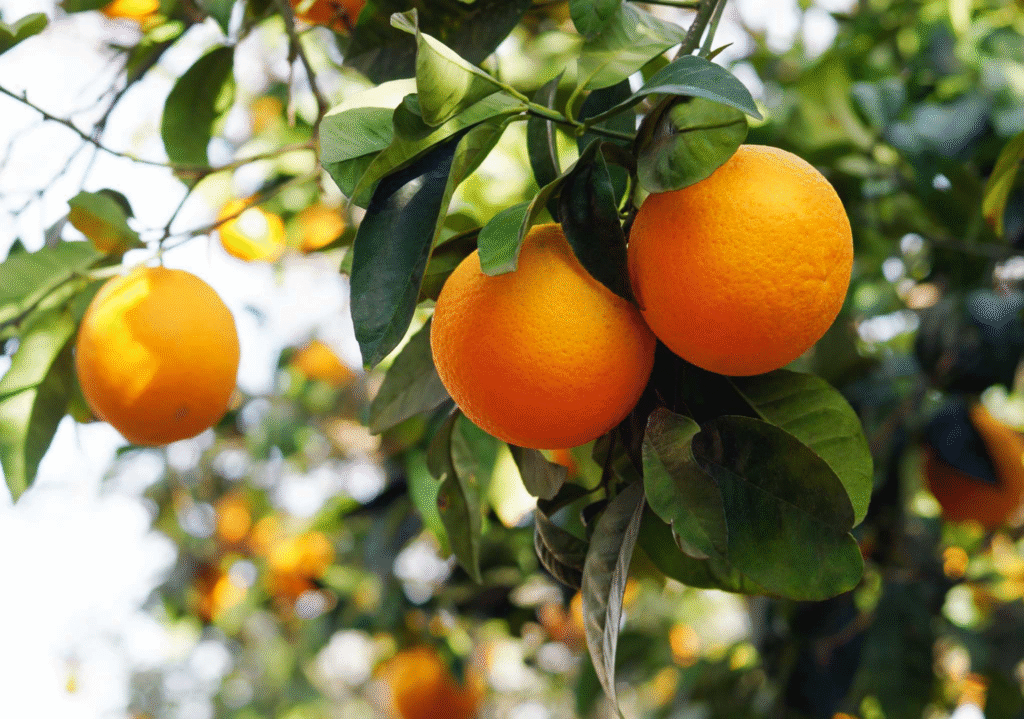
Common Pests
- Citrus leaf miners: These tiny larvae tunnel through leaves, creating silvery trails. Control with neem oil or appropriate insecticides.
- Aphids: These small insects cluster on new growth and can transmit diseases. Control with insecticidal soap or a strong spray of water.
- Scale insects: These appear as bumps on branches and leaves, sucking plant juices. Remove with rubbing alcohol on a cotton swab for small infestations or use horticultural oil for larger problems.
- Citrus mites: These tiny pests cause stippling on leaves. Control with miticides or horticultural oil.
Common Diseases
- Citrus canker: This bacterial disease causes raised lesions on fruit, leaves, and stems. Remove and destroy affected parts immediately as it can spread rapidly.
- Root rot: Caused by overwatering or poor drainage. Prevent by ensuring proper drainage and avoiding waterlogged soil.
- Greening disease (HLB): A serious bacterial disease spread by the Asian citrus psyllid. Contact your local extension office immediately if you suspect this disease, as it may require tree removal.
Harvesting and Using Tangelos
The reward for your careful cultivation is a bountiful harvest of juicy tangelos! Here’s what you need to know about harvesting:
When to Harvest
Tangelos typically ripen from December through February, depending on your location and the specific variety:
- Minneola tangelos: Usually ready from January to February
- Orlando tangelos: Typically ripen from November to January
- Seminole tangelos: Generally available from December to February
Ripe tangelos have:
- Fully developed color (deep orange to reddish-orange)
- Slight give when gently squeezed
- Sweet aroma
- Easy-to-remove stem
Harvesting Technique
- Twist and pull: Gently twist the fruit while pulling it from the branch.
- Use clippers: For cleaner removal, use pruning shears to cut the stem close to the fruit.
- Handle with care: Avoid dropping or bruising the fruit during harvest.
- Timing: Harvest in the morning when temperatures are cooler for best flavor.
Storage and Usage
Freshly harvested tangelos can be:
- Stored at room temperature for up to one week
- Refrigerated for 2-3 weeks
- Used in numerous culinary applications:
- Eaten fresh as a snack
- Juiced for beverages
- Added to salads
- Used in marinades
- Incorporated into desserts
- Made into marmalade or preserves
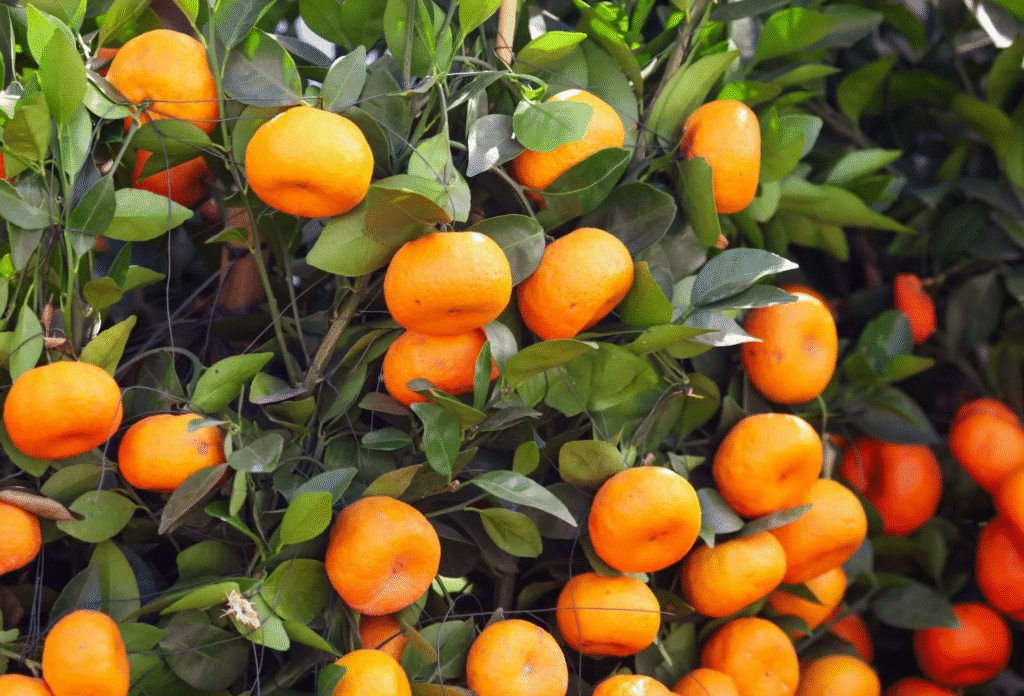
Troubleshooting Common Tangelo Growing Issues
Even experienced gardeners encounter challenges. Here are solutions to common tangelo growing problems:
Fruit Drop
Problem: Tangelos forming but dropping before maturity. Solutions:
- Ensure consistent watering (drought stress is a common cause)
- Check for pest infestations
- Verify proper fertilization
- Note that some natural drop is normal, especially in the first year of fruiting
No Fruit Production
Problem: Mature tree not producing fruit. Solutions:
- Verify sufficient sunlight (6+ hours daily)
- Check pollination (may need companion citrus nearby)
- Ensure proper fertilization
- Be patient with young trees (may take 3-5 years to begin fruiting)
Yellow Leaves
Problem: Leaves turning yellow. Solutions:
- If veins remain green: likely iron deficiency (apply iron chelate)
- If entire leaf yellows: could be overwatering or nitrogen deficiency
- If yellow spots: check for pest damage
Splitting Fruit
Problem: Fruit splitting on the tree. Solutions:
- Maintain consistent watering schedule
- Mulch to retain soil moisture
- Avoid fertilizing late in growing season
Conclusion
Growing tangelos can be an incredibly rewarding experience that provides you with delicious, nutritious fruit for years to come. Whether you choose to plant them in your garden, grow them in containers, or start from seed, these vibrant citrus trees add beauty and bounty to your growing space.
Remember that patience is key—citrus trees take time to establish and produce quality fruit. By following the guidelines in this article and adapting to your specific growing conditions, you’ll be well on your way to tangelo success!
For more specific information about growing citrus in your area, consult your local USDA Cooperative Extension office, where experts can provide region-specific advice tailored to your growing conditions.




